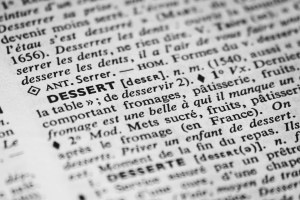The Signs Are Everywhere
How much time do you spend in the supermarket aisle confused by the labels on mayo — or yogurt — or milk? Reduced fat, low fat, light, fat free, low in calories. You need a spread sheet to sort out the calories and the nutritional stats.
The same thing is true on menus, in deli cases, and the little labels perched next to the choices in salad bars. Are the calories in the low calorie tuna salad less than the calories in the reduced calorie? Can you even believe those calligraphied labels behind the glass cases?
Check The List Of Ingredients
Most packaged food labels list ingredients in descending order by weight, not amount. The first ingredient listed has the greatest amount by weight, the last ingredient is the one with the least amount by weight.
Fatty Labels
Labels have to include the total amount of fat, saturated fat and unsaturated fat. This carves the way for the low, reduced, and fat free categories.
- Low fat means 3 grams of fat or less per serving (or per 100 grams of food)
- Reduced fat means the food product contains 50% (or less) of the fat found in the regular version
- Less fat means 25% or less fat than the comparison food
- Fat free means the product has less than 0.5 grams of fat per serving, with no added fat or oil
Salty Labels
- Reduced sodium means at least 75% less sodium
- Low sodium means 140 milligrams of sodium or less per serving
- Very low sodium means 35 milligrams of sodium or less per serving
- Sodium free (salt free) means there is less than 5 milligrams of sodium per serving
Sweet Labels
- Sugar free means there is less than 0.5 gram of sugar per serving
- No sugar added means there’s no table sugar added but there may be other forms of sugar like dextrose, fructose, glucose, sucrose, maltose, or corn syrup
The Low down On Low, Light (Lite), Lean, and Reduced
- A label that screams reduced calorie means there’s at least 25% fewer calories per serving than in the regular product
- Low calorie means 40 calories or less per serving and less than 0.4 calories per gram of food
- Light (fat) means 50% or less of the fat than in the regular version
- Light (calories) means 1/3 fewer calories than the regular version
- Lean means less than 10 grams of fat, 4.5 grams of saturated fat, and 95 mg of cholesterol in a 100 gram serving of meat, poultry or seafood
- Extra lean means less than 5 grams of fat, 2 grams of saturated fat, and 95 mg of cholesterol in a 100 gram serving of meat, poultry or seafood
SocialDieter Tip:
Confused by the ins and outs of labeling? Why shouldn’t you be – it’s downright confusing. Try to be as savvy as possible. For instance, take the reduced fat label, which means a product contains at least 25% less fat than the original version. Unfortunately, this doesn’t mean that the reduced fat version is low fat. For instance, you buy what is labeled as a reduced fat muffin. If the fat content in the original full fat muffin is 30g, and the fat has been reduced to 15g, which, with a 50% reduction allows it to say it is reduced fat, the reduced fat muffin still has a fat content five times higher than the 3g of fat per serving that officially qualifies as low fat. The trick is to look carefully at the calorie count and fat breakdown on the nutrition label and note the numbers for each. A check of the ingredients label will also give valuable information. Remember, these regulations are for packaged food, not prepared food like you find in salad bars and deli cases. Those foods may be labeled, but you are putting your trust in the preparer of the food to be approximately accurate (and truthful). In New York City and other municipalities, fast and chain food outlets of a certain size must give caloric breakdowns. The new Health Care Reform Act will require this nationwide for restaurants with more than 20 outlets.
